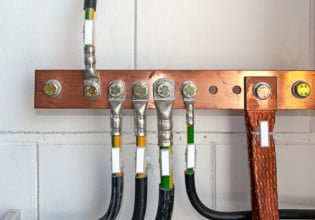Micro Inverters Battle DC-DC Converters for Supremacy in PV Systems
The battle has begun and makers of micro inverters are waging a war against makers of distributed dc-dc converters for control of the power conversion market for photovoltaic (PV) systems. The emergence of disruptive power architectures including micro inverters and dc-dc converters will be one of the most important trends in the PV market in the near-term. The stakes are high, literally hundreds of millions, or even billions, of dollars.
Improvements in energy efficiency and greater electricity production from a given PV array will be ensured by either architecture. But will economics favor micro inverters or dc-dc converters? That is the big question, and the current war is being waged on the battlefield of economics. The 75-page first edition of "Disruptive Technologies Affecting the PV Industry, Micro Inverters and DC-DC Solutions: Economic Factors, Application Drivers, Architecture/Packaging Trends, Technology and Regulatory Developments" is the only report to detail the front lines of this battle for supremacy.
The shortcomings inherent in the central inverter architecture are expected to provide a host of opportunities for several new technologies. In fact, there are a growing number of companies developing products and technology specifically designed to generate more power from the PV panels already on the market. A distributed converter architecture using either of two specific disruptive technologies, micro inverters or dc-dc solutions, is expected to present a significant challenge to the conventional central inverter architecture over the coming years.
A significant advantage both of these disruptive technologies have over traditional central inverter technology is the ability to perform maximum power point tracking (MPPT) at the panel level. Due to variations in shading, dirt, and aging of solar panels, individual panel voltages will differ, causing the output voltages of strings of panels to vary.
In addition to improvements in efficiency, the ability to reconfigure PV arrays without additional complex string calculations and improved operational flexibility, another opportunity for both micro inverter and dc-dc solutions is the further development and availability of communications systems for both commercial and residential PV systems. Manufacturers of disruptive technologies such as micro inverters and dc-dc solutions have picked up on this trend and are incorporating them into their respective systems.
The demand for technology to address the problem of PV shading is another area of opportunity for both micro inverters and dc-dc solutions. Due to the nature of solar array configuration, small amounts of shade (for example, shading of less than 10% of the surface area of a PV system) can lead to disproportionate power losses. Common causes of shade include structural objects such as trees, chimneys and dormers, and intermittent debris including falling leaves, bird droppings, dust and clouds passing overhead. These are unavoidable challenges that cannot be engineered out of an installation.
In an effort to promote the use of disruptive technologies such as micro inverters and dc-dc solutions, and avoid an outright battle in front of potential customers, a number of micro inverter and dc-dc solution manufacturers have adopted a strategy of partnerships and alliances within the industry. In fact, a number of solar suppliers and utilities have made either alliances or acquisitions of distributed electronics vendors in what is clearly a validation of the potential for both of these new disruptive technologies.
Details for "Disruptive Technologies Affecting the PV Industry, Micro Inverters and DC-DC Solutions" are here .






